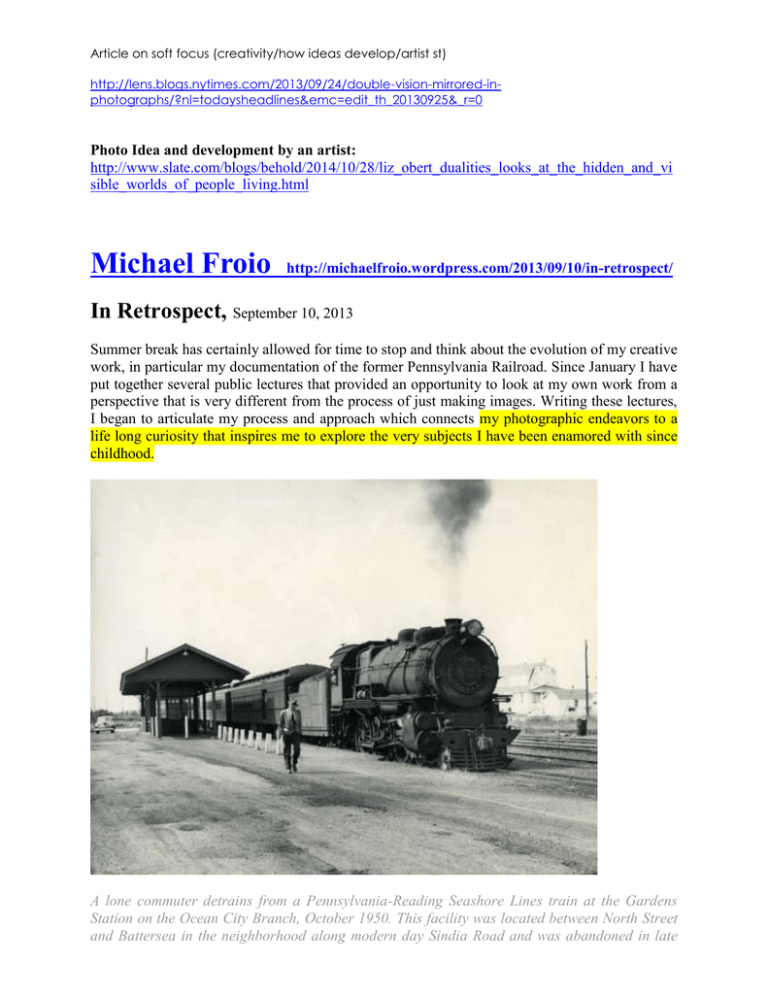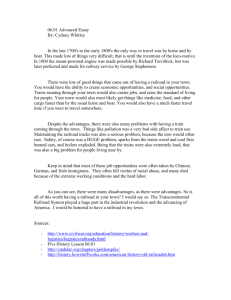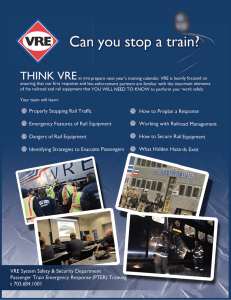Article on soft focus (creativity/how ideas develop/artist st) photographs/?nl=todaysheadlines&emc=edit_th_20130925&_r=0
advertisement

Article on soft focus (creativity/how ideas develop/artist st) http://lens.blogs.nytimes.com/2013/09/24/double-vision-mirrored-inphotographs/?nl=todaysheadlines&emc=edit_th_20130925&_r=0 Photo Idea and development by an artist: http://www.slate.com/blogs/behold/2014/10/28/liz_obert_dualities_looks_at_the_hidden_and_vi sible_worlds_of_people_living.html Michael Froio http://michaelfroio.wordpress.com/2013/09/10/in-retrospect/ In Retrospect, September 10, 2013 Summer break has certainly allowed for time to stop and think about the evolution of my creative work, in particular my documentation of the former Pennsylvania Railroad. Since January I have put together several public lectures that provided an opportunity to look at my own work from a perspective that is very different from the process of just making images. Writing these lectures, I began to articulate my process and approach which connects my photographic endeavors to a life long curiosity that inspires me to explore the very subjects I have been enamored with since childhood. A lone commuter detrains from a Pennsylvania-Reading Seashore Lines train at the Gardens Station on the Ocean City Branch, October 1950. This facility was located between North Street and Battersea in the neighborhood along modern day Sindia Road and was abandoned in late 1958. It was photographs like this that captivated me at an early age and today hangs in my office to remind me of my early curiosity of railroad history. Photograph by Robert L. Long, collection of the author. At an early age we all form some unhealthy obsession with inanimate objects, whether it be trains, trucks, legos or even dolls, but at some point most grow out of it. Not me! Since the age of three I’ve have had a fascination with railroads. I loved the models and of course enjoyed seeing freight or passenger trains pass by, but what really peaked my curiosity was the idea of where those trains were going and why. I grew up in Southern New Jersey, a place where regularly scheduled passenger trains whisked people to the shore resorts of Atlantic City, Ocean City, Wildwood and Cape May over 75 years ago. The region was home to the unique operations of the Pennsylvania-Reading Seashore Lines where bitter rivals the Pennsylvania Railroad and the Reading Railroad came together after a consolidation of operations in the 1930′s. Providing through passenger service, Camden-Philadelphia ferry service, commuter and freight operations this system thrived in the summer months moving countless vacationers by rail to the resorts and offered scaled down operations after the peak summer season. By the time I was alive, the former PRSL network had become a part of Conrail, and the few remaining passenger runs would come to an end in 1982. I remember the former PRSL RDC cars in Cape May and Lindenwold and occasional trips to Philadelphia with my father and grandfather recall seeing the inside of Reading Terminal’s 1890′s train shed and the countless trains that passed behind the Philadelphia Civic Center. Expressing an interest in trains, one summer our baby sitter took my brother and I to visit her uncle who worked at Pavonia Yard in Camden the major terminal for former PRSL operations; We visited the hump yard, Brown interlocking tower in South Camden and even rode a locomotive on the industrial tracks near Bulson Street Yard. I was bit…even more curious, about why these lines existed, wanting to know about the stations and facilities that survived and the industries the railroad served. Many times I begged my father to take Atlantic Ave along the Clementon Branch just to follow the tracks in hopes to spot some old artifact or a view of one of the stations. I turned to books like By Rail to the Boardwalk, The Atlantic City Railroad, The Trail of the Blue Comet, and Trains to America’s Playground, many of them books from members of the local West Jersey Chapter of the NRHS. These books were my gateway to feeding a curiosity that would never subside. Through subsequent travels with my father to Altoona including an infamous snowy hike up to MG tower near the famous Horseshoe Curve and road trips with friends once I was licensed to drive, I continued to explore both close to home and along the former PRR, using very basic photography to document what I saw. East Broad Top steam line-up, Rockhill Furnace, October, 1999. One of the projects I successfully incorporated the railroad into my collegiate experience was a Advanced Documentary class. I spent 8 weekend in the fall of 1999 driving several hundred miles to photograph the fabled East Broad Top Railroad. Little did I know then, this would be the last year they had four locomotives under steam, let alone the railroad would be shuttered today. This led to another unhealthy obsession, the need to understand and master the photographic process. A typical teenager trying to find their voice, I found the the whole medium fascinating – it was one that was both technical and creative. After a few courses in community college, I had decided to pursue photography enrolling in Drexel University’s Photography Program in 1998. While attending Drexel in West Philadelphia I was surrounded by landmarks of the former Pennsylvania Railroad’s sprawling terminal facilities including 30th Street Station, the West Philadelphia Elevated Branch, Penn Coach Yard and Powelton Ave Yards. Though my interest in railroads had taken a back seat to other subjects, I had always found myself captivated by places and things that I had learned about through my research of railroad operations. On occasion I turned to railroads for subject matter in class projects but more often gravitated to the landscape, enjoying the sanctity of the open spaces of rural Southern New Jersey and the vernacular architecture of farming and agricultural communities. I spent considerable time exploring and photographing places along the Delaware River, trying to understand issues on land usage and how industry and recreational activities impacted the landscape. I took inspiration by a host of photographers like William Clift, Frank Gholke, Art Sinsabaugh, Walker Evans and George Tice. Reading the book, They All Fall Down, I was taken by the tireless work of Richard Nickel to photograph and preserve the buildings of famed Chicago architect Louis Sullivan in the 1960′s and 70′s which sparked my own interest to document landmark buildings that were once prominent structures in Philadelphia society. Eventually termed the Relic Project this work would be the first in which I realized that my work was more than just “fine art” but could serve as a means for preservation, something that Nickel had taken so serious it literally killed him. Erdner Warehouses, Woodstown, NJ. This image was from a series that started in college, photographing the agricultural regions of Salem, Cumberland and Gloucester Counties, what little is left of the Garden State of New Jersey. The diversity of my explorations contributed to building a visual toolbox that would guide my work after graduation. Free of worry about what others thought about my work, or what grade I would receive, photography was about what I wanted to do with the creative process. It took several years of experience and understanding that came from different projects but with time I gravitated back to the very subject that started it all: the railroad and not just the PennsylvaniaReading Seashore Lines but the mighty Pennsylvania Railroad. Where would the project go? What should the work look like? I really didn’t know, but if I didn’t take the chance in 2007, I wouldn’t be here sharing this with you today. The Mainline Project and the rest of my photographic endeavors are the culmination of life long interests, the intersection of a love affair of trains, history, architecture and geography.




